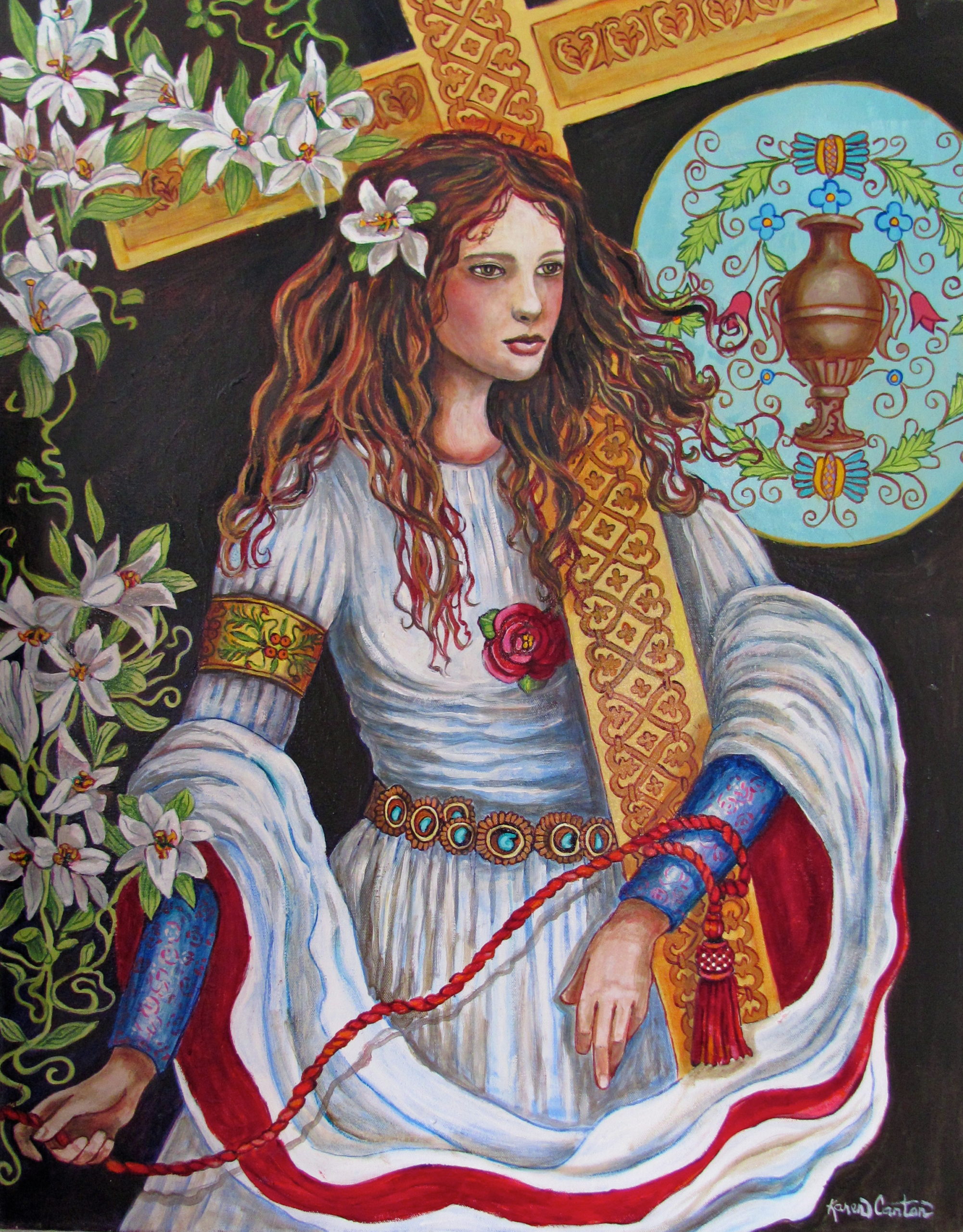Women of Lent 5: The Women at the Tomb

Women at Jesus’ tomb…their presence is reported in all four gospels, but what are the similiarities and the differences between each telling of the story in Matthew, Mark, Luke and John?
First, the common denominators:
- Women were the first to approach the tomb after the Sabbath
- Women were the first to be addressed by the angels and/or Jesus
- Women were the first to see Jesus after the resurrection
- Women were the first to spread the news about his resurrection
- “Woman” was the first word spoken by the angels (in John) after the resurrection
- “Woman” was the first word spoken by Jesus (in John) after the resurrection
- The disciples did not belive the women—except for Peter and John, initially, who ran to the tomb after Mary Magdalene had sought them out.
Here are the differences between the gospels:
Matthew: Mary Magdalene and the “other Mary” find the tomb empty, hear an angel say that Jesus has risen, run to tell the disciples, and are met by Jesus. (Chapter 28:1-10)
Mark has two endings: #1) Mary the mother of James, Salome the mother of James and John, and Mary Magdalene find the tomb empty. They are told by a messenger that Jesus has risen and are so stunned they say nothing to anyone. #2) Jesus appears to Mary Magdalene; she goes to his distraught companions and tells them he is alive and well, but they do not believe her. (Mark 16)
Luke: “The women” went to the tomb and could not find Jesus’ body. Two angels, full of light, ask them why they are searching out the living among the dead; they return empty-handed. Luke names the women: Mary Magdalene, Joanna, Mary the mother of James and the “other women with them.” The words seemed to the disciples “an idle tale,” and they initially did not believe them.” (Luke 24:1-12)
John: Mary Magdalene goes to the tomb, sees the stone moved away, and runs to tell Peter and “the beloved disciple.” The men run to the tomb, go inside, find nothing and return home. Jesus appears to Mary Magdalene; she tells the disciples. (John 20:1-10)
Bottom line: The women were there for Jesus. They did not let him down, even when they thought they had lost him completely to the powers of evil. They cared for him when he was alive, they stood with him when he was killed in front of them, and they showed up to take care of his body after death. What a joy it must have been to see him face-to-face. What a joy it must have been to have the power of death beaten back, trampled underfoot. What a joy to understand first-hand what it meant to be in the presence of God. What a joy indeed!
Image: Mary Magdalene. Karen Canton painting. From The Scarlet Cord, Conversations with God’s Chosen Women, John Hunt Publishing, Lindsay Hardin Freeman, author.
copy excerpted from Bible Women: All Their Words and Why They Matter, published by Forward Movement, 2014.

